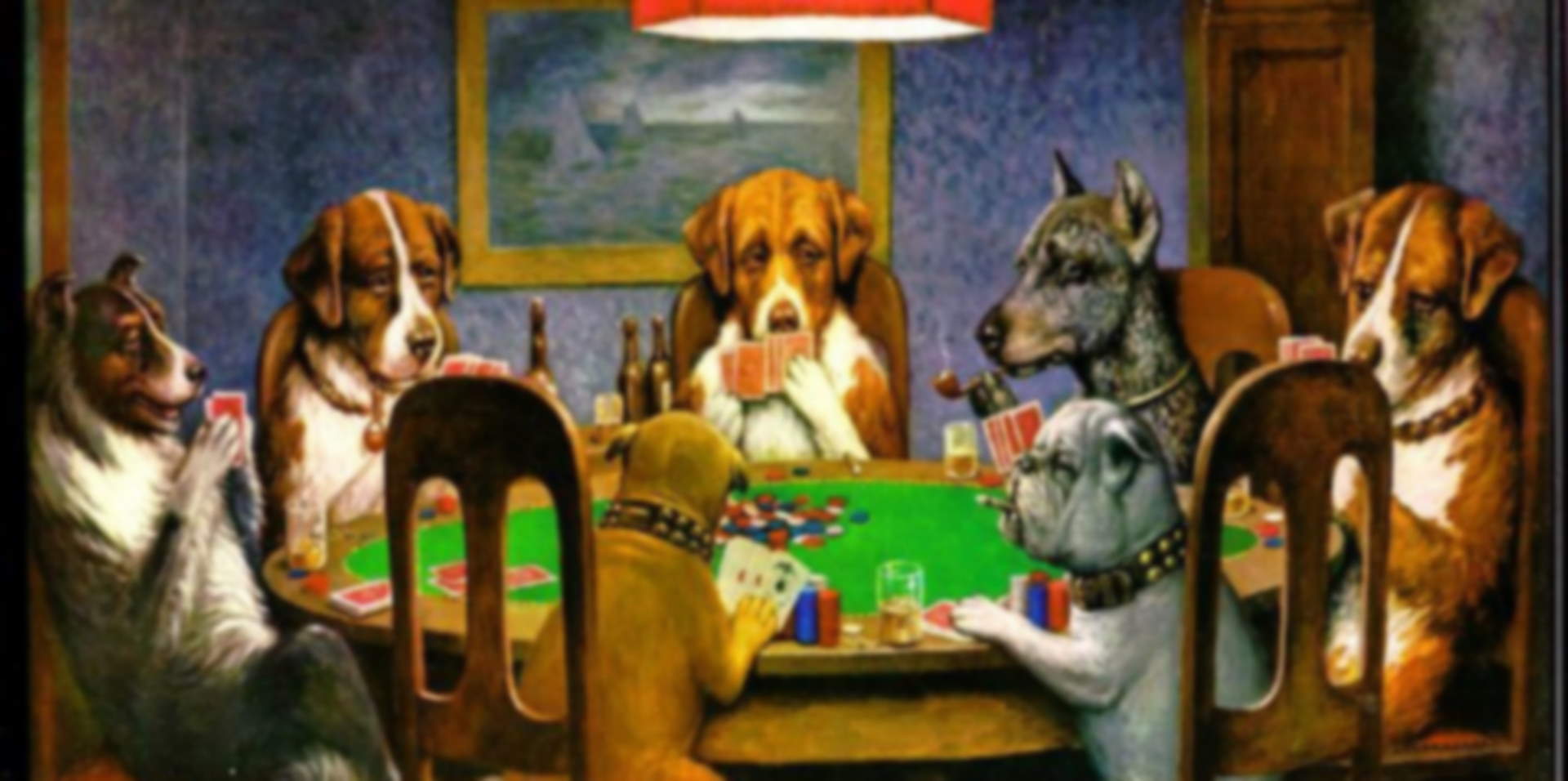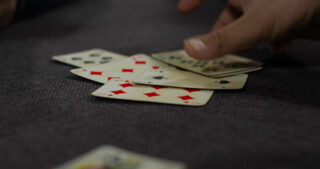

There are two reasons for this. First is reading hands. That is the “art and science” of deducing what cards your opponent holds. This is usually done by replaying the hand in your mind and combining it with whatever other information you have available about your opponent. If you can figure out your opponent’s holding, you can now play perfectly.
The second reason is that in games like limit hold ’em and seven-card stud, the pots frequently get so large in relation to the final bet that you are often just better off calling anyway. Using tells to fold when there are many chips in the center of the table can be a serious mistake. You may be costing yourself money even if you are only wrong occasionally.
With this being said, there is another area which is different from tells, but closely related, and I find fairly valuable. I call these visual cues.
The reason they are different is that they are not dependent on distinct mannerisms that players exhibit. In fact, as we shall soon see, they occur simply because many people are outright sloppy about their play, and you, the astute player, can take advantage of this sloppiness.
There are three spots where these visual cues are quite prevalent, and the rest of this essay will be devoted to describing them. Notice that they will allow you to play a few extra hands, steal a pot here and there, and occasionally gain an extra bet.
Visual Cue No. 1: Folding too soon before the flop
When playing hold ’em, many players quickly lose interest in their hands when they are not in blinds. This makes sense if you pick up something like 8 3 . There is virtually no way you can play it so the only thing you can do is toss it in the muck. So what happens is that many players begin their tossing motion before the action gets to them, and if you take quick look to your left you can see this and take advantage of it.
For example, suppose you hold Q 10 in middle position and no one (except for the blinds) is in yet. Normally, this is a hand that I fold in this spot. But if three of the players behind me are beginning their pitching motions, my hand has become a late position steal and I’ll put a in raise.
Before going on it is important to note that only a quick look to your left is necessary. There are a few players who will make a long pause here and sometimes even hide their cards in an attempt to get the players to act behind them. This has the effect of slowing the game down too much and gains very little over what a quick look to your left can ascertain anyway.
Also, there are a few players who will indicate that they are going to play. While not as common, if you notice someone putting a chip on their cards or starting their betting motions you can profitably throw some hands away. For instance, if you are one off the button with the same Q 10 as above, and you notice that the player on the button has put a chip on his cards, you might want to fold instead of raising.
It is also important to note that these comments do not apply to players who are in the blinds. In this spot, no matter how bad someone’s hand is, they still have an interest in the pot. Thus they won’t be sloppy anymore.
Finally, this visual cue mainly applies to hold ’em, since I virtually never sees it in a stud game. This may have something to do with the fact that stud hands are more complex (because there are three cards instead of two and other upcards that supply information on the hand are available).
Visual Cue No. 2: Procrastinating stalls
Suppose you bet a very marginal hand on an early round. All your opponents fold except for one who takes a long time to call and is clearly having difficulty doing so. This is almost never an act, and unless an extremely scary card comes, you almost always have a profitable bluff on the next round. (Note that a profitable bluff doesn’t mean that your opponent is guaranteed to fold. All it means is that given the size of the pot your opponent should fold often enough for you to make money in the long run.)
Here’s an example from hold ’em. Suppose you have 6 3 in the big blind, several players have limped in, and the flop is K 5 2 giving you a gutshot straight draw. Let’s say you bet as a semi-bluff and everyone folds except for the player who is last to act, and he goes into one of these procrastinating stalls, indicating that he is not real happy about putting any more chips in the pot. You should bet again on fourth street no matter what hits unless it is a four that makes your straight — now you may want to check in an effort to trap your opponent. Here’s an example from stud. Suppose on third street you are first in from a late position and raise the bring-in with 6 K 6 and the two remaining players behind you each with a small card in the door call. On fourth street it appears that everyone has caught a blank. You bet again and your first opponent tosses his hand, but your second opponent calls after a long pause where he is clearly struggling with his decision. You should bet again on fifth street unless you greatly improve your hand (where you now might want to check) or if your adversary now catches something that looks extremely threatening.
Visual Cue No. 3: Enough chips to call
The last visual cue that we will examine is simply when your opponent prematurely grabs enough chips to call. This occurs when he expects you to bet, and he just wants to get the hand over with. In almost all cases he is just calling, because the pot is large and he can beat a bluff. At times I have even seen these callers put their money in the pot before their opponent has bet. How they now think that they can beat a bluff is something that I can’t explain.
Anyway, the beauty of this is that since your opponent is almost always very weak, a marginal hand which you may or may not bet with now becomes a highly profitable bet. When you see this you should bet these hands every time. For example, when playing hold ’em, suppose you start with a pair of kings and the flop comes J 6 2 . You bet and you get one caller.
The turn is the 9 ; you bet and your opponent calls again.The river is a 10 . Notice that this card creates a problem for your hand because of the uniformity that it adds to the board. If you are not against a straight, you could easily be against two pair which beats your overpair. It’s tough to bet in this spot.
But now suppose your opponent goes into one of these premature calls. You should bet virtually every time.
An example from stud would be when you have a medium strength hand, such as two pair and you are against someone who appears to be on a flush draw. Even though you have been betting all the way your plan is to now check on the river. But to your surprise your opponent has enough chips in his hand and is ready to begin his calling motion. This almost always means that you are against something weak — your opponent either missed his flush and made a pair or his hand was different from what you originally thought. In any case you should bet almost every time.
What has happened is that since you have led on every street the player that you are against expects you to fire one more time so his chips are ready to go in. Of course, thanks to his sloppy play he is right, your chips do go in and you almost always win an extra bet on the end.
To complete this “visual cue” it needs to be pointed out that the above is not a classic “acting tell.” If your opponent was acting he would almost always threaten you with enough chips to raise. If you see this and your hand was weak, it might be more correct to bluff with a terrible hand than value bet a marginal one.
To conclude this essay it needs to be stressed again that these visual cues occur because of sloppy play. It is very rare for a strong player to play sloppily. This is because top players pay attention to what they are doing and what is going on. If you see something similar to what is described above and it comes from an expert or near expert player, there may be a reason for it and you should proceed with caution.
Mason Malmuth
Dieser Artikel erschien auf PokerOlymp am 19.06.2007.


